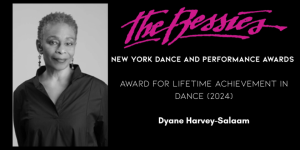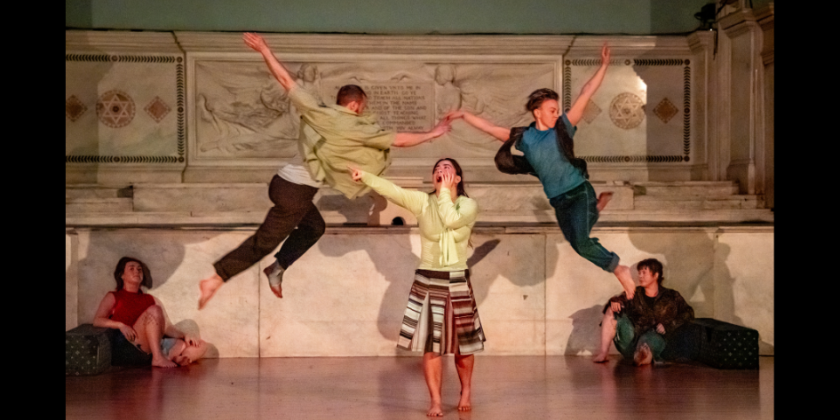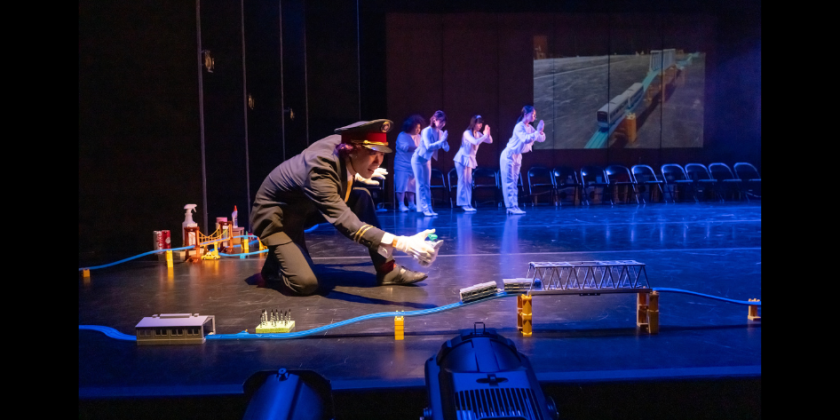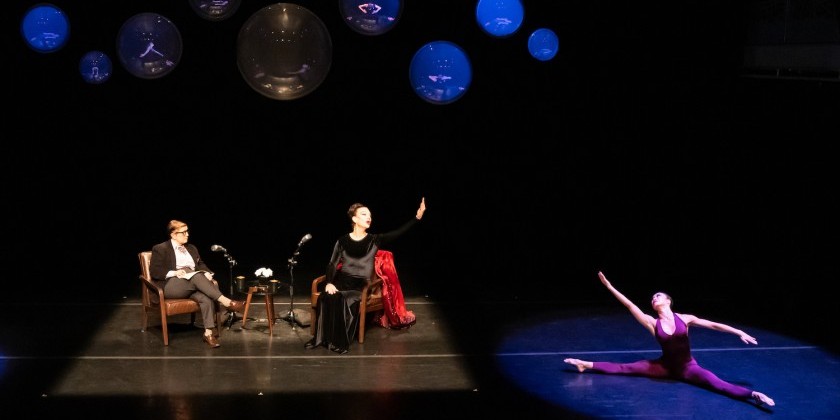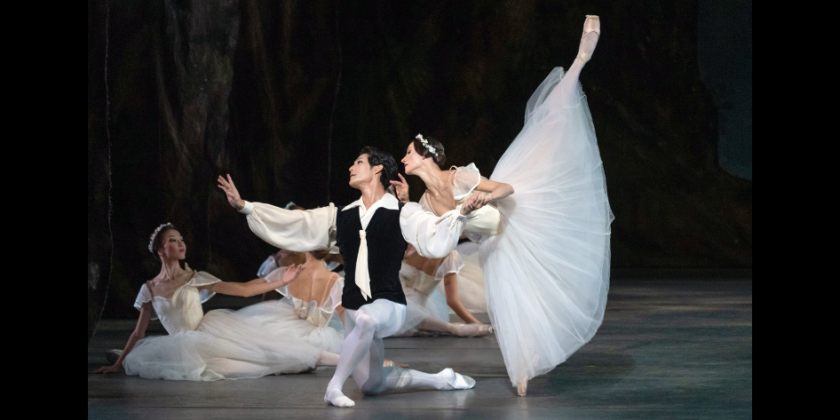IMPRESSIONS: Summer Dance in NYC, The Battery Dance Festival (Part ll)
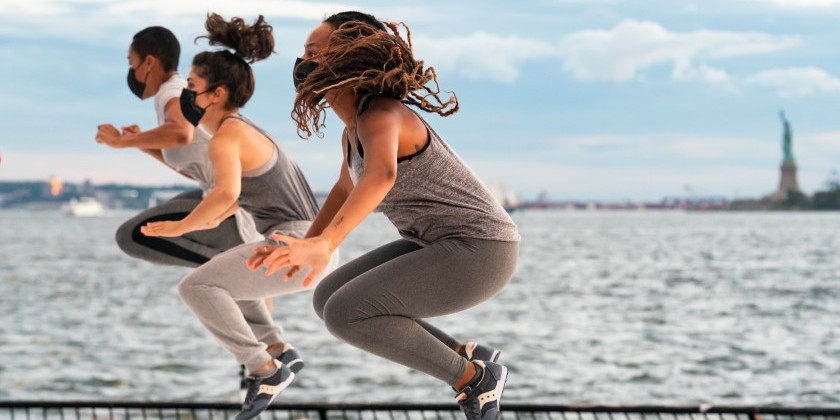
Six Evenings, Six Performances, and Thirty-Two Premieres
BATTERY DANCE FESTIVAL, PART II
The fourth program in this year’s Battery Dance Festival, held outdoors in Robert Wagner Park, gets off to a powerful start. On Wednesday, August 18th, performed by Cleveland’s Dancing Wheels Company, recognized as the first professional physically integrated dance company in America, Odyssey is a dance in which three of the performers occupy wheelchairs.
Choreographed by Marc Brew, the piece is tautly structured. Vignettes emerge, which can be dynamic or poignant. A woman flies and is caught in mid-air; another woman climbs out of her wheelchair and clings to her partner’s back. In the end, the whole cast gaze dreamily into space, perhaps envisioning a world in which all things are possible.
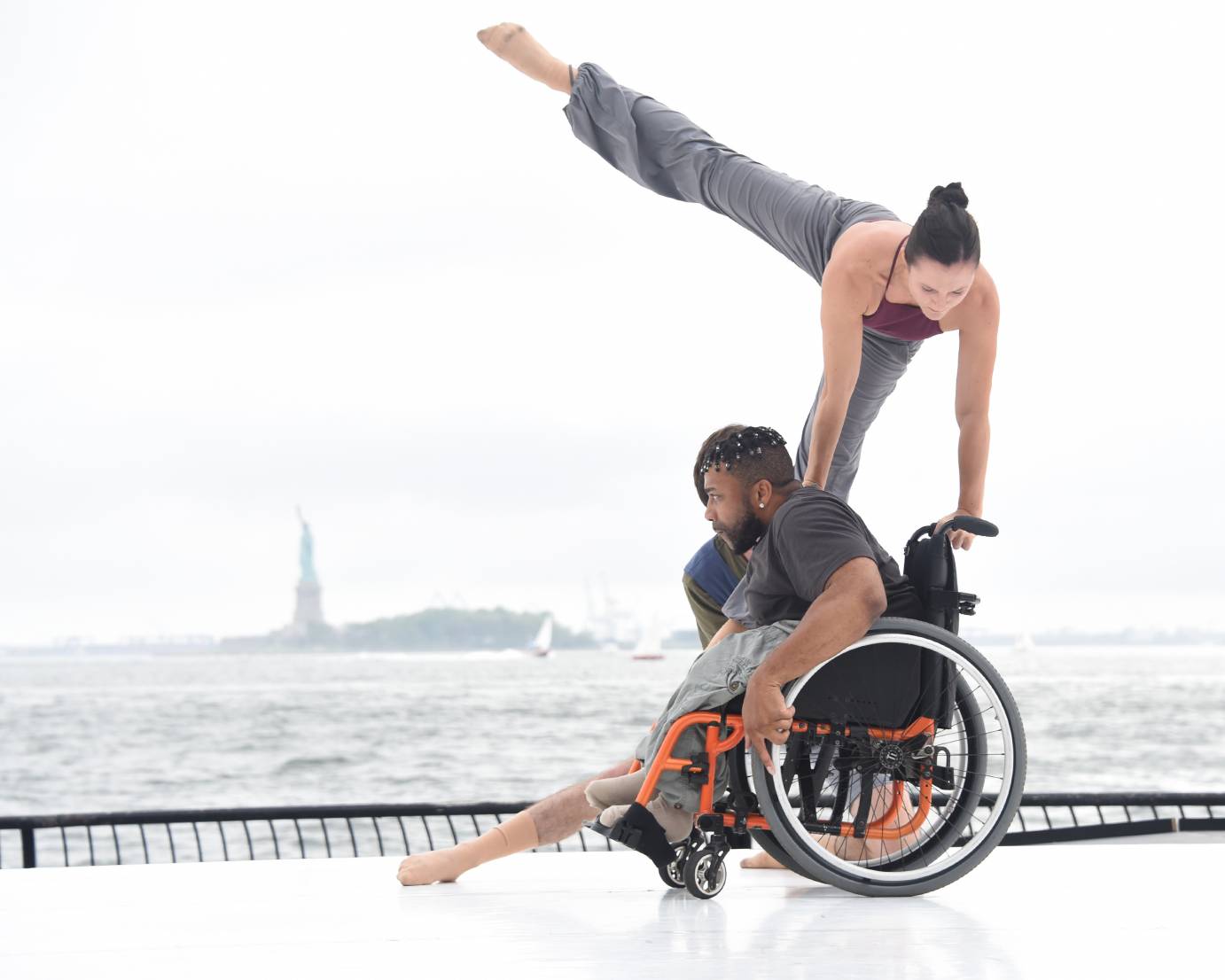
Tap-dance choreographer Demi Remick’s Radio Days, is a work of frantic escapism, with three dancers romping through a selection of Broadway melodies, movie soundtracks, and the billboard hits of yesteryear (“If I Knew You Were Comin’ I’d’ve Baked a Cake”). The mood is carefree, and sometimes gently romantic, but what makes us sit up straight is the energy in Remick’s breakout solo, a joyous and full-bodied expression of life. Was this dance really in Technicolor?
William Byram’s Honky Tonk Angels is also set to popular music—this time the tear-soaked ballads of Patsy Cline. No one in this sly, female ensemble surrenders to self-pity, however. Instead, these amorous cowgirls bump and grind. They cup their breasts and prance; and they aren’t shy about taking what they want. Provocatively they scamper through fist-fights, infidelities, and fleeting moments of tenderness.
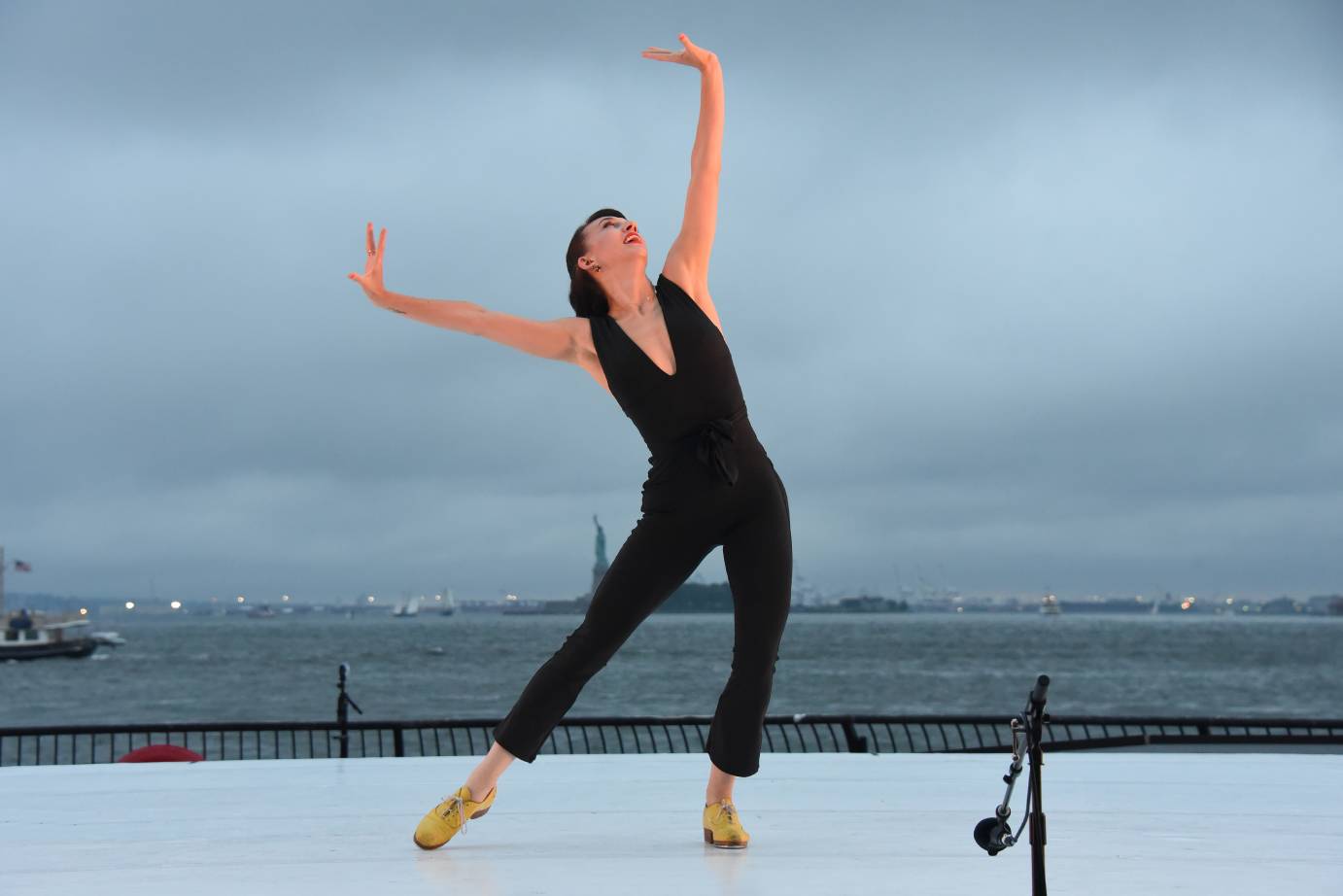
Although the Battery Dance Festival is certainly eclectic, each program is carefully balanced, and some evenings reveal themes. Thursday is a “ballet” night, for instance, including a neo-classical duet by the late Jerome Robbins, and two pieces set to renowned Ballets Russes scores.
Listening to Igor Stravinsky’s Rite of Spring never grows old; and choreographers continue to find new uses for a score that represents the ultimate in senseless violence. Jamal Jackson locates his piece 846 (Rite of Spring) in present-day America, where Black people are the recurring sacrifice. The piece begins with a voice-over in which a man recalls an ordinary day filled with appointments and small tasks. Then Stravinsky arrives to shatter the peace, and once more we find ourselves trapped in a nightmare ritual channeling brutal impulses from the Unconscious. The women drape the men with invisible garlands, and everyone parades with their hands held flat atop their heads like crowns. This Rite is episodic: at various points, someone is isolated and the threat of slaughter brushes against them. In the end, the group clusters around one man pointing their hands at him like pistols. This dance, we know, must eventually claim a victim.
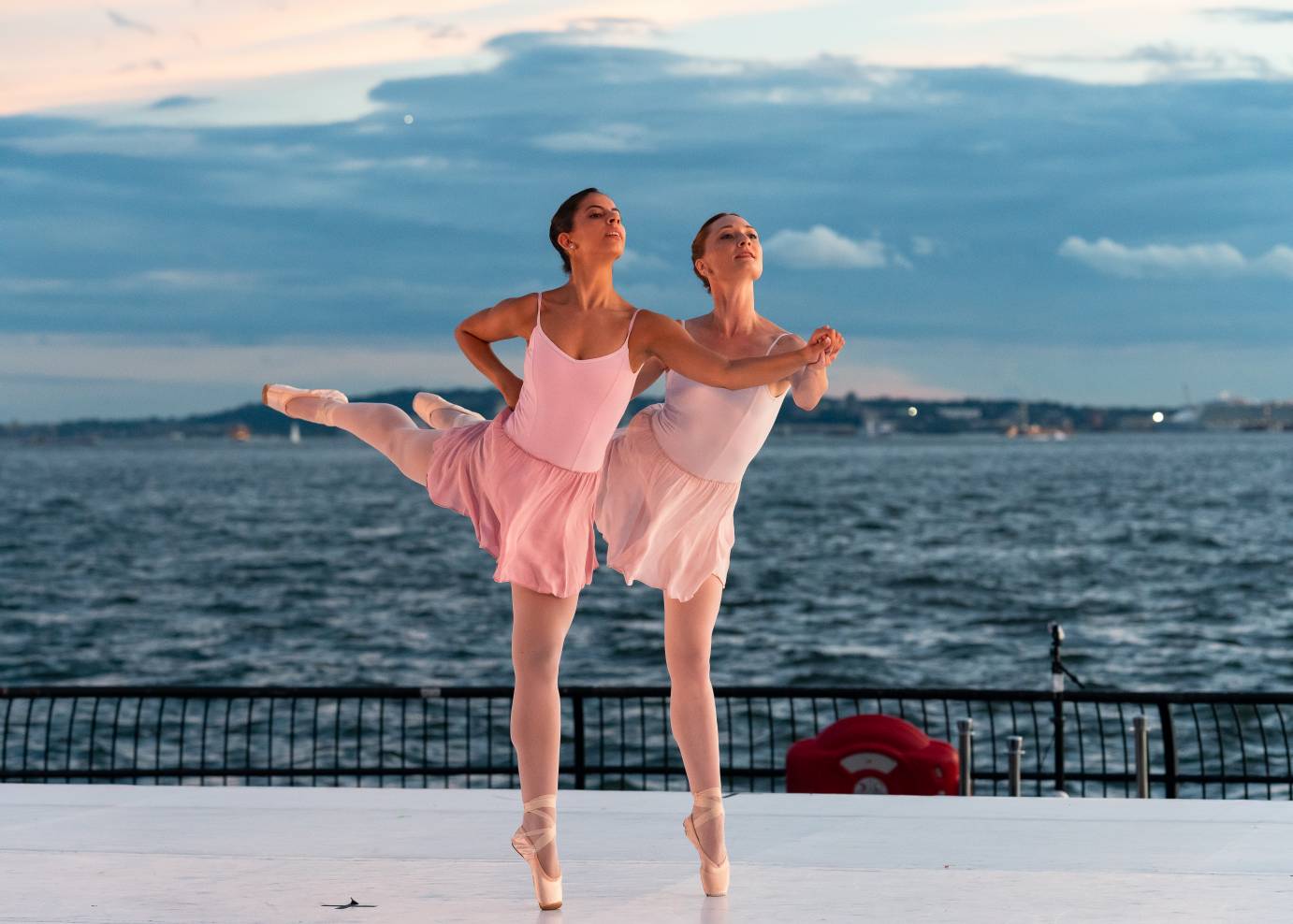
Although Rondo is just another piano ballet (yes, Virginia), Jerome Robbins’ 1980 duet for two women sparkles like a freshly polished gem. Though packed with steps, it never becomes cluttered. After a languorous opening, New York Theatre Ballet’s Amanda Treiber and Giulia Faria mirror and chase each other. They leap grandly or become absorbed in finicky footwork, pausing wistfully and then darting into allongé poses. Bumping into each other (where have we seen this before? Oh, yes—Les Biches) they soften again. We see some partnering with a supported promenade, before the women bow graciously in farewell, not failing to thank the audience for its attention. Lovely!
The original scenario for Daphnis and Chloe (like its source in Longus) is slyly comic. Two innocent lovers are separated and must undergo a series of trials, which postpone again and again the moment when they will lose their virginity. Choreographer Christopher Williams has his own ideas about this ballet, however, including ditching graceful, “natural” movement. His male solo The Prayer of Daphnis is earthbound, cramped and angular. Dancer Taylor Stanley props himself up, and hunches over an invisible fire which he fans gently. When vertical, he spins in reverse. Finally, despair prompts him to reach heavenward and deliver the titular prayer.
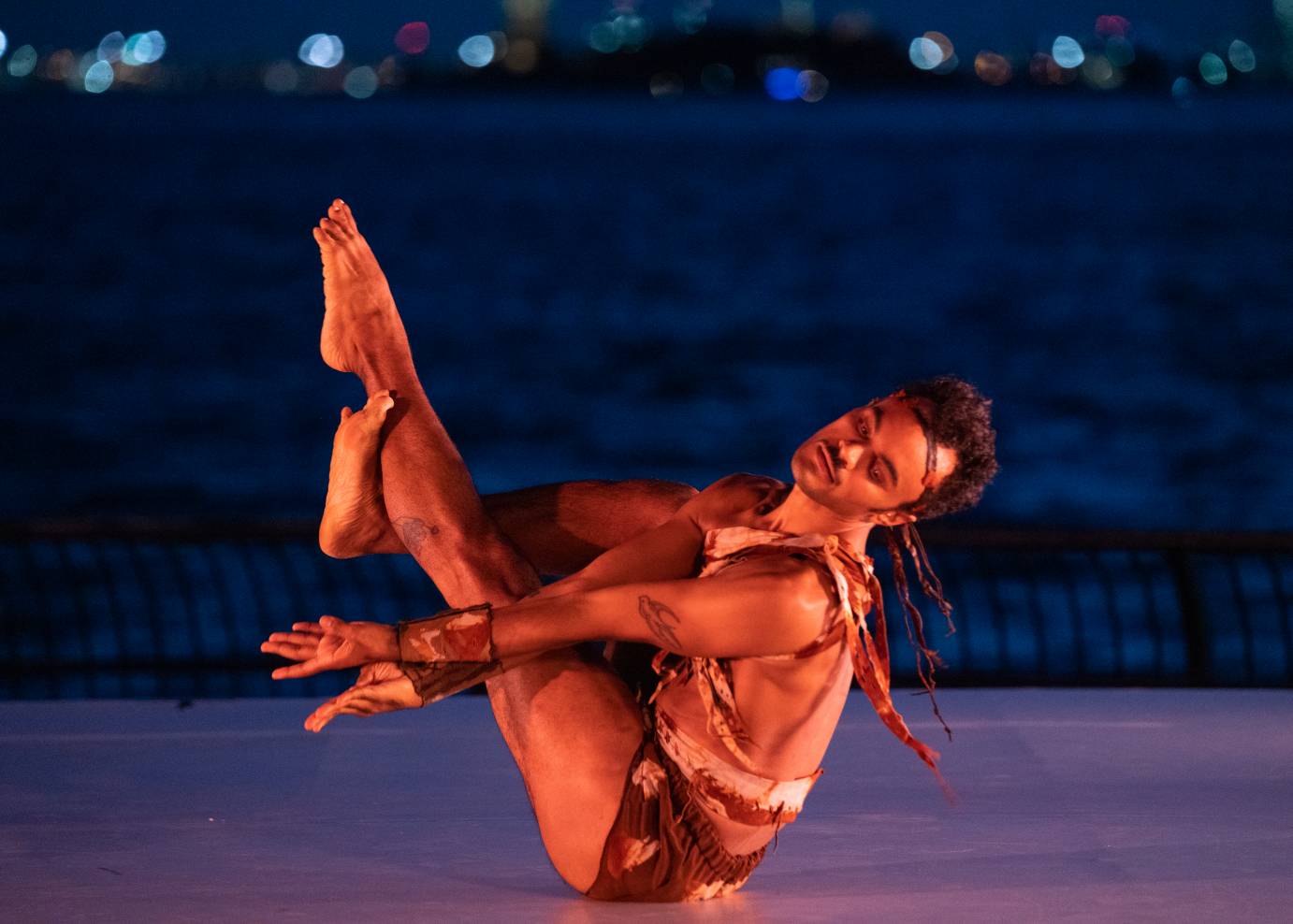
The evening concludes with a vibrant contemporary ensemble performed by the Battery Dance Company. South African choreographer Theo Ndindwa’s Observatory is fast and punchy, yet never loses the sense of symmetry and order that ties it to this evening’s “ballet” theme. The luscious ebb and flow of energy feels organic—Observatory must be a pleasure to dance---and even when this energy pops in unexpected ways the movement is never harsh. The dancers walk, jog, and then take to the air in a flying lift. Bravo!
The Battery Dance Festival concludes, on Friday, with a dancing tour of Latin America that also makes a stop in Brooklyn. Here we see a dazzling panoply of traditions ranging from theatricalized folklore to dances that remain essential to the life and worship of their communities.
Ballet Nepantla falls into the first category offering the airy, balleticized Sones de Michoacán, a showcase for women whose dainty footwork emerges from beneath swirling skirts in bright, sun-kissed colors. The famous Danza de los Viejitos seems closer to ancient ritual, with eight performers wearing grotesque masks and moving in tight patterns as they stamp the ground.
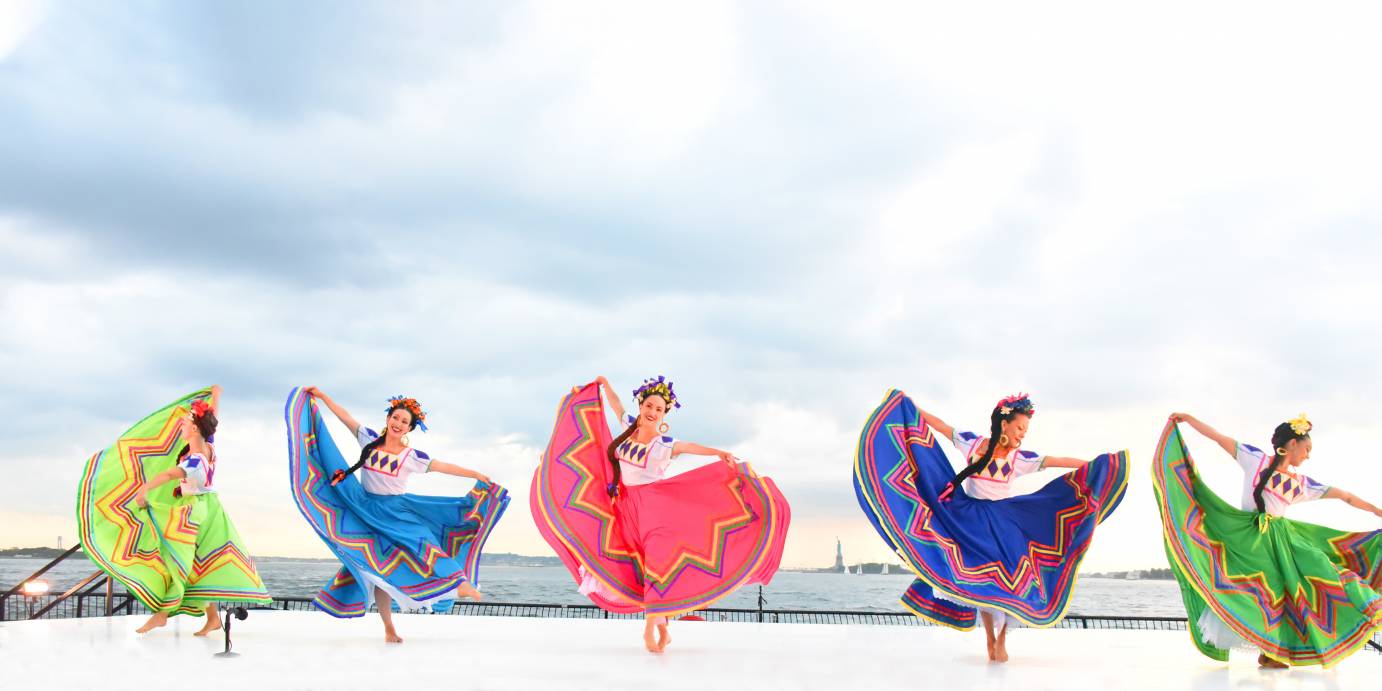
Flower, choreographed by Joshua Morales, might also be regarded as a form of “tourist” performance, reaching beyond the narrow circle of a particular community to appeal to viewers from all walks of life. Here a group of five Hip Hop virtuosi display their mastery of rhythm and energy, drifting effortlessly, sending movement snaking through their bodies, and folding their arms with sharp, angular gestures. When hands or bodies interlock, we see the “flowers” of the title, spiky growths that look hungry and contribute to the atmosphere of danger and excitement.
Another kind of danger is on display in Cuesta Abajo, performed by tango partners Dardo Galletto and Alonso Guzmán. A suicidal risk accompanies these dancers, their feet interlacing at high speed as they whirl, strike, and surrender to each other like desperate lovers.
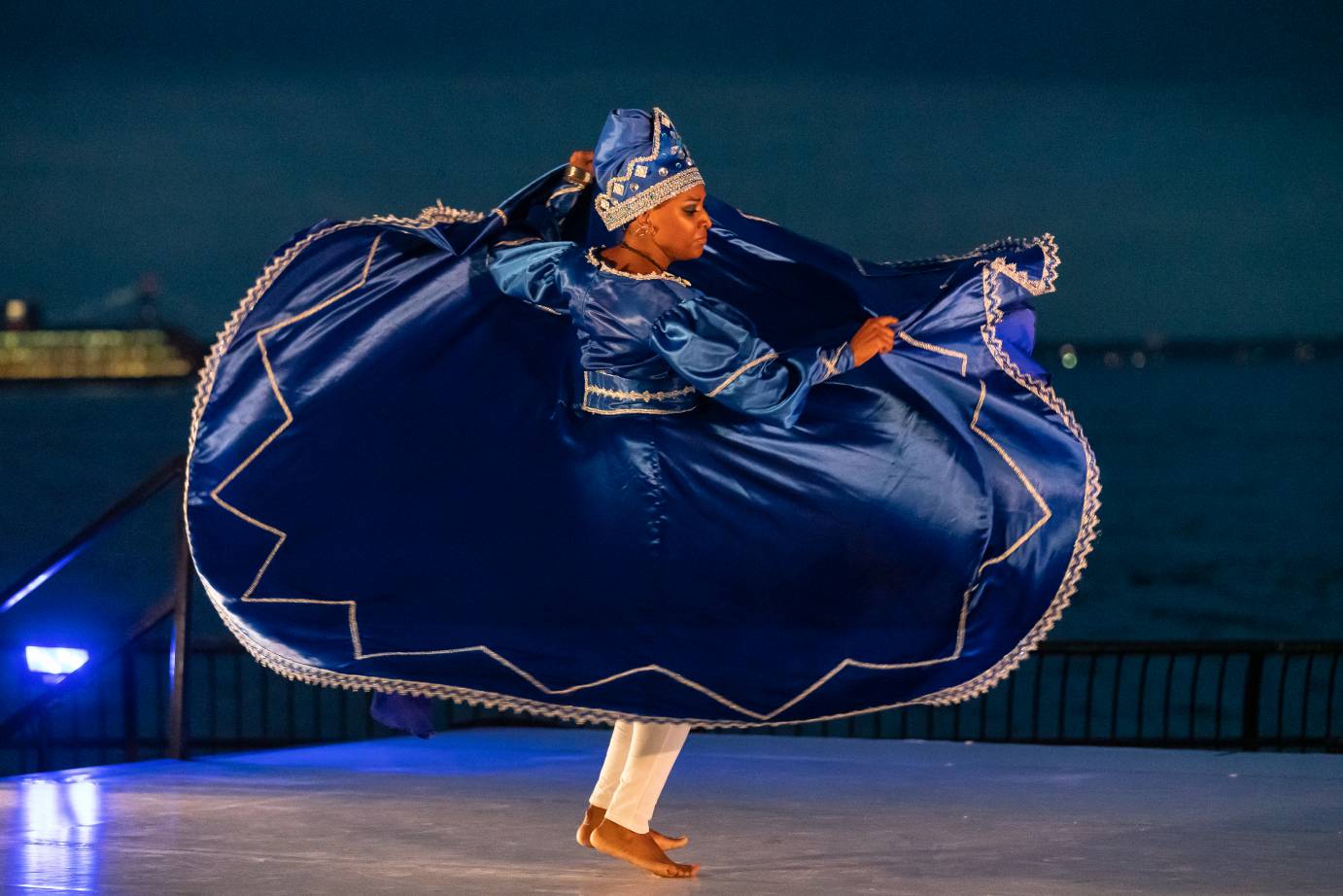
Accompanied by three indispensable drummers and singer Jadele McPherson, Cuban dancer Beatrice Capote assumes the mantle of a goddess in Yemaya: Rebirthing to Existence, a spiritual solo that reflects the power and mystery of the ocean swelling just beyond the stage. Stepping into an azure costume, and donning a glittering headdress, Capote swirls and tilts and rolls her shoulders. Now she struts proudly, shaken by the demands of unseen forces; now she sinks to the ground, without ever losing the connecting thread of energy. She prostrates herself before the drummers. Then, with a sudden leap and shout, the dance is over---except this dance never really ends. Phenomenal!
Capote’s solo also represents cultural survival, and triumph over oppression of the most heinous kind. As humanity sinks once again into darkness, we must keep this example in mind. We can only hope that the Battery Dance Festival will return to inspire us again next year.






